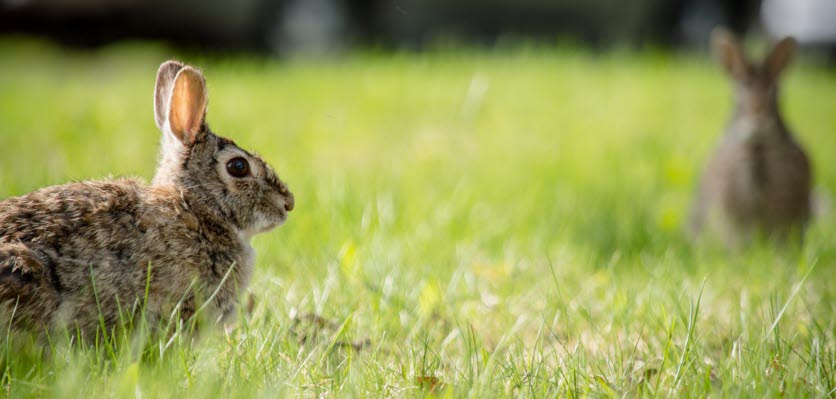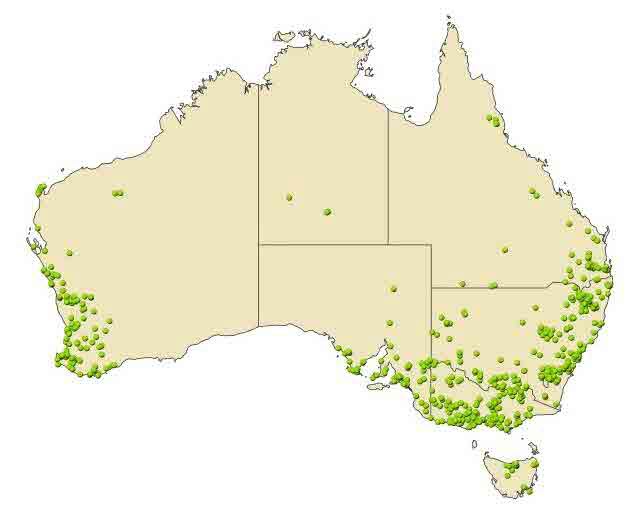Rabbit calicivirus in Australia

There are a number of RHDV strains present in Australia:
- RHDV 1 Cz351- Czech strain released in 1995
- RHDV1A - Variant of type 1 isolated in Sydney in 2014
- RHDV1 K5 – Korean strain released in March 2017
- RHDV 2 - First recorded in mid-2015 in Australia, 2010 in Europe
- RCV - A1 Non-pathogenic virus present in wild population
There has been some confusion between the new variant of RHDV1 (K5) and the discovery in 2015 of RHDV2 in wild and pet rabbits.. This new virus is called RHDV2, but is a different virus to RHDV1 and K5.
The pathogenic strains of the virus (RHDV1 Cz351, RHDV1 K5 and RHDV2) are considered contagious and can be transmitted via; direct contact with infected rabbits, fomites, transmission via equipment and clothing, transmission by vectors including flies. Use of a parvovirus type cleaning protocol is recommended after suspicious cases.
Protection against RHDV1 strains
Based on scientific evidence to date, the existing RHDV1 vaccine (known as Cylap®) is effective against RHDV1 K5. This evidence is based on a small pilot study undertaken by NSW Department of Primary Industries.
It is recommended that all domestic rabbit owners be reminded to vaccinate their rabbits prior to the release of RHDV1 K5 and/or ensure their animals’ vaccinations are up-to-date.
Precautions for rabbit owners
The Department of Primary Industries recommend that rabbit owners take the following extra precautions:
- Prevent direct and indirect contact between domestic and wild rabbits.
- Avoid cutting grass and feeding it to rabbits if there is the risk of contamination from wild rabbits.
- Wash hands, with warm soapy water between handling rabbits.
- Good insect control is also important and will help reduce the risks of introduction of both RHDV and myxomatosis. Insect control could include insect proofing the hutch or keeping the rabbits indoors.
- Infected rabbits should be isolated and disposed of in a manner that will minimise environmental contamination.
- All cages and equipment should be thoroughly cleaned and disinfected. Disinfectants that can be used to decontaminate any equipment include 10 % bleach, 10 % sodium hydroxide, or parvocide disinfectants. If using disinfectants material safety data sheets must be available and consulted, prior to use. Autoclaving will also kill the virus.
The vaccine is considered effective as RHDV1 K5 is not a new virus; it is a Korean variant of the existing (Czech) virus already widespread in Australia.
Protection against RHDV2
RHDV2 does not pose a risk to human health and is not a notifiable livestock disease. However, the impact on pet rabbits and rabbit farms is high and it can cause death in young kittens (3-4 weeks) and a proportion of vaccinated adults. This new virus strain is distinct from RHDV1, which was released in Australia in 1996 for the control of wild rabbits. It affects rabbits and hares only.
RHDV2 was first reported in France in 2010 and has been found in several other European countries. It was first detected in Australia in the Canberra area in May 2015.
Clinical signs of RHDV2 differ from the type 1 virus. RHDV2 affects kittens at a younger age (from 3-4 weeks) and clinical signs may be over 3-5 days before death. This is significant in general practice where unwell rabbits may present for vague clinical signs including; lethargy, inappetence, pyrexia and gut stasis. These rabbits will be infectious to other rabbits.
Clinical signs can include;
- pyrexia
- seizures
- hypoglycaemia
- anaemia
- significant increases in liver and kidney enzymes
- death
The current vaccine for rabbit calcivirus (Cylap RCD) is not fully protective against RHDV2. However, there is evidence of some cross protection between type 1 and type 2 viruses. Keeping domestic or pet rabbits’ vaccinations up to date is recommended to provide the maximum possible protection against this new strain. While an updated vaccine has been developed in Europe it is not currently available in Australia.
Development of a vaccine specific for RHDV2 is currently underway and there has been excellent progress to date, and documentation is being prepared for submission to APVMA for a pilot "standalone" RHDV2 vaccine.
As it is unknown how long these processes will take, it is currently not possible to provide an estimate of when this vaccine will be available to the public.
Research to develop a multi-valent vaccine that would provide protection against both RHDV1 and RHDV2 strains, is ongoing.
Current vaccination recommendations for domestic rabbits
The AVA recommends regular vaccination. For the RHDV1, 1A and RHDV1-K5 viruses 12 monthly vaccination is recommended. For the variant that emerged in parts of Australia in 2015 called RHDV2 there is no specific vaccination available in Australia. The AVA suggests the following protocols, this should be followed in consultation with your local veterinarian.
Kittens: 4, 8, 12 weeks of age, then every 6 months.
Adults: 2 vaccinations 2-4 weeks apart, then every 6 months.
This protocol is off-label. Cylap is not registered for use against RHDV2 or for 6 monthly use.
Based on studies conducted so far, giving the vaccine at more frequent intervals does not have negative health effects. Veterinarians need to advise owners that this protocol is off label.
Vaccination should always be administered to healthy animals, and a risk/benefit discussion with an owner is strongly recommended before vaccination of animals with chronic illness. Young animals are anecdotally more likely to show post-vaccination lethargy and inappetence. It is common to get a local reaction to the vaccine, especially if vaccination is not performed with a new needle, or if the vaccine is inadvertently given intradermally.
Note that any benefit of earlier and more frequent vaccination of kittens has to be balanced against the increased likelihood of any adverse event from the vaccine. The suggested off-label regime has not yet been validated in terms of increased protection or risk of adverse events, and feedback from veterinarians would be most welcome while we work to determine the most appropriate way to handle this situation.
Owners of pet rabbits and breeding stock are urged to implement strict biosecurity measures to protect their animals from infection, and talk to their vets about how best to achieve this.
What to do if you suspect a domestic rabbit has died from RHDV1 or RHDV2 infection?
If you suspect a domestic (pet) rabbit may have died of calicivirus (or myxomatosis), you can now request a free test kit by emailing your postal address to CSIRO scientist Dr Robyn Hall robyn.hall@csiro.au
Alternatively any veterinarian in NSW or ACT who suspects a domestic rabbit may have RHDV2 can also submit a fresh frozen 1g liver sample (not formalin-fixed) to the NSW State Diagnostic Veterinary Laboratory at the Elizabeth Macarthur Agriculture Institute (EMAI).
What do they need?
The diagnostics team will require a fresh or frozen (not formalin-fixed) liver sample.
It is important that the whole rabbit or a liver sample is placed in a ziplock bag or sterile urine jar and then frozen at -20 degrees Celsius, until the test kit arrives.
Once in the preservative the liver sample is stable at room temperature and can be posted to us in the regular post. Samples without a completed submission form will not be tested.
For complete sampling instructions visit - https://research.csiro.au/rhdv/testing/
How long does testing take?
Results should be available within 1-2 weeks of receipt of sample, pending any technical difficulties. You will receive an email of your results.
Join our unusual and exotics special interest group
Unusual Pet and Avian Veterinarians (UPAV) special interest group specialises in the changing face of pets in Australia. The group promotes discussion about the medicine and surgery of pet species other than dogs and cats. For more information, visit the Group page.
UPAV member benefits include:
- quarterly newsletter
- email discussion group providing practical and professional support
- continuing professional development through webinars and at the AVA and UPAV annual conferences
- conference proceedings
- discounted publications.
Figure 1: The RHDV1 K5 release sites across Australia.

